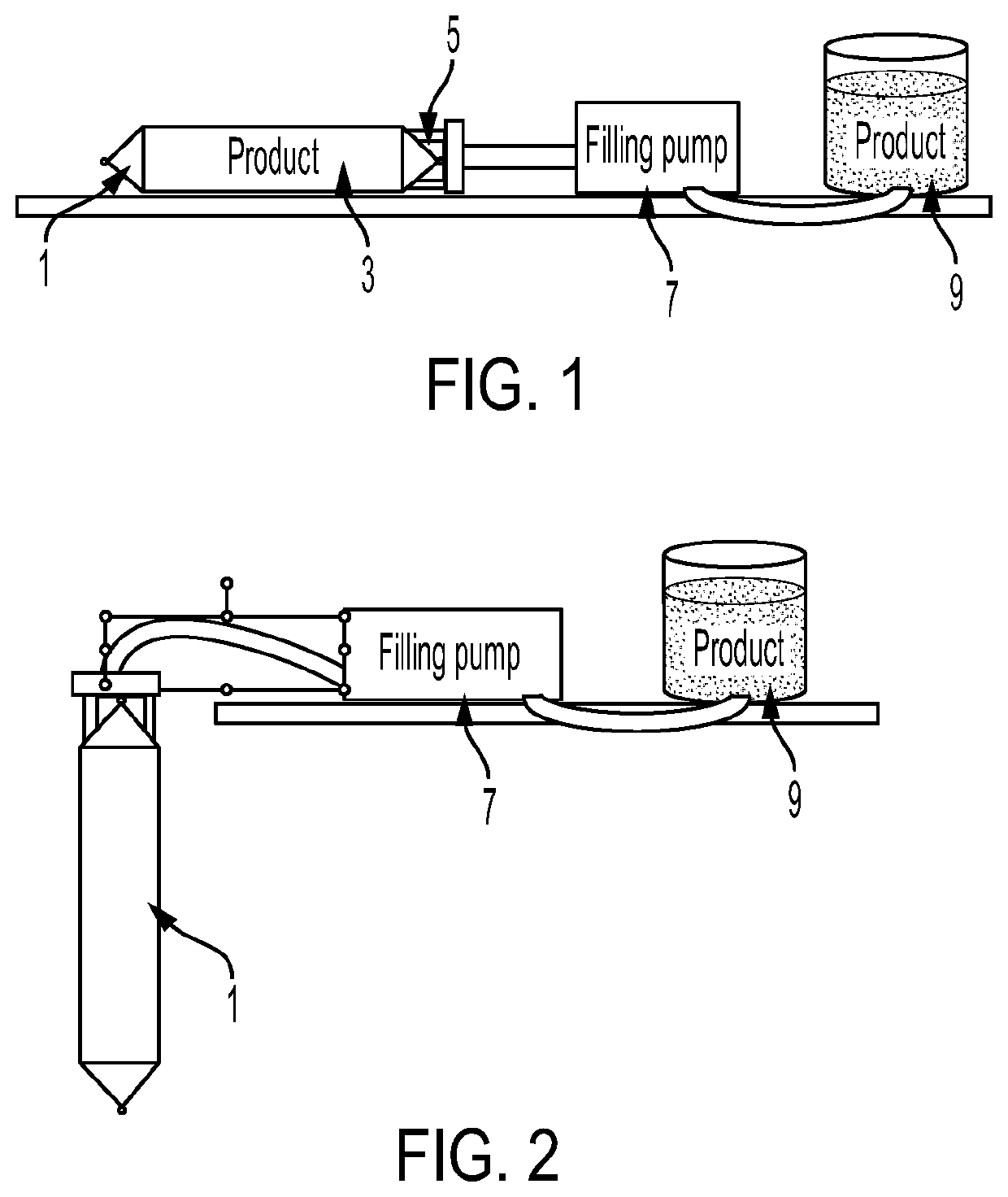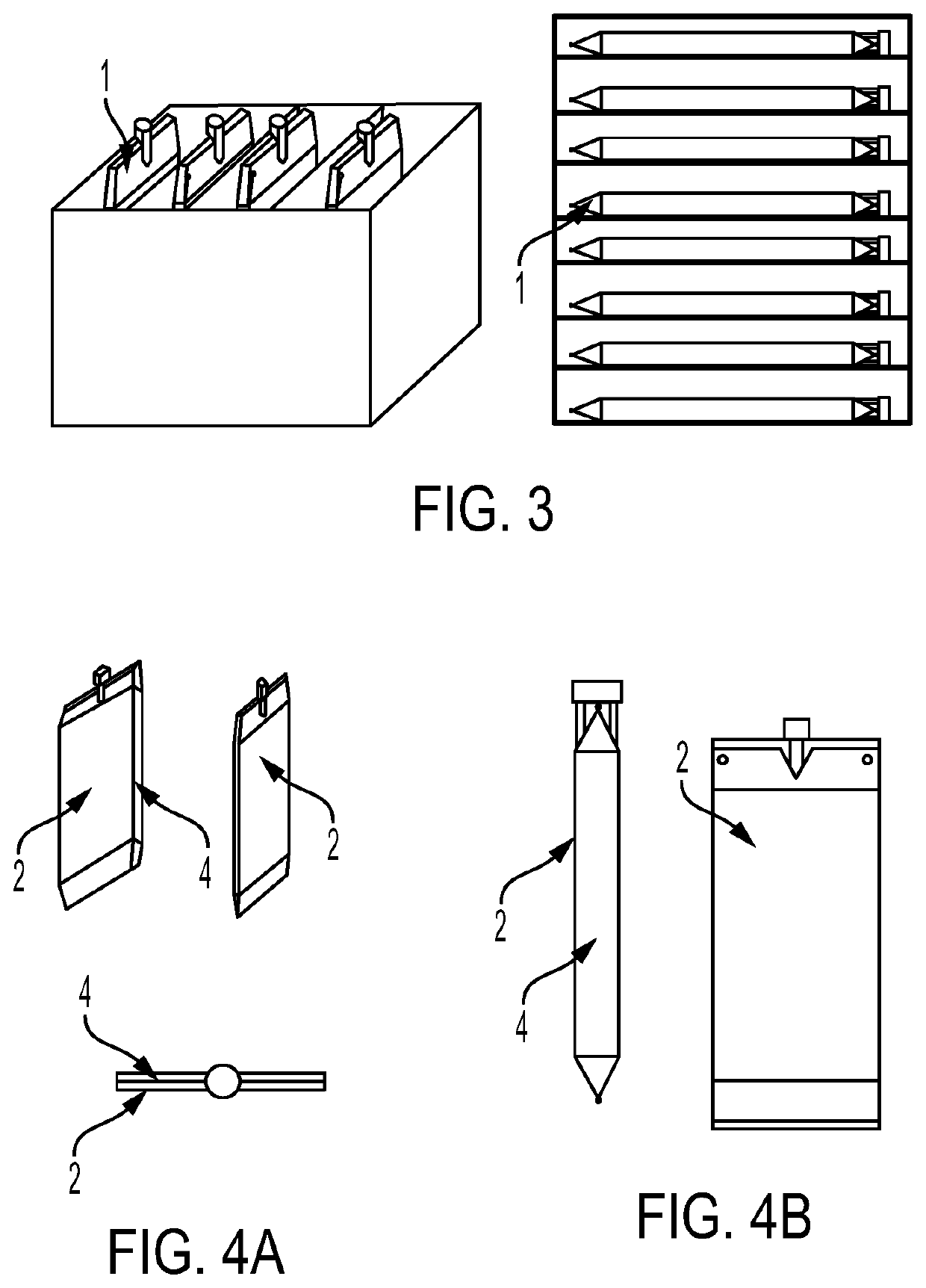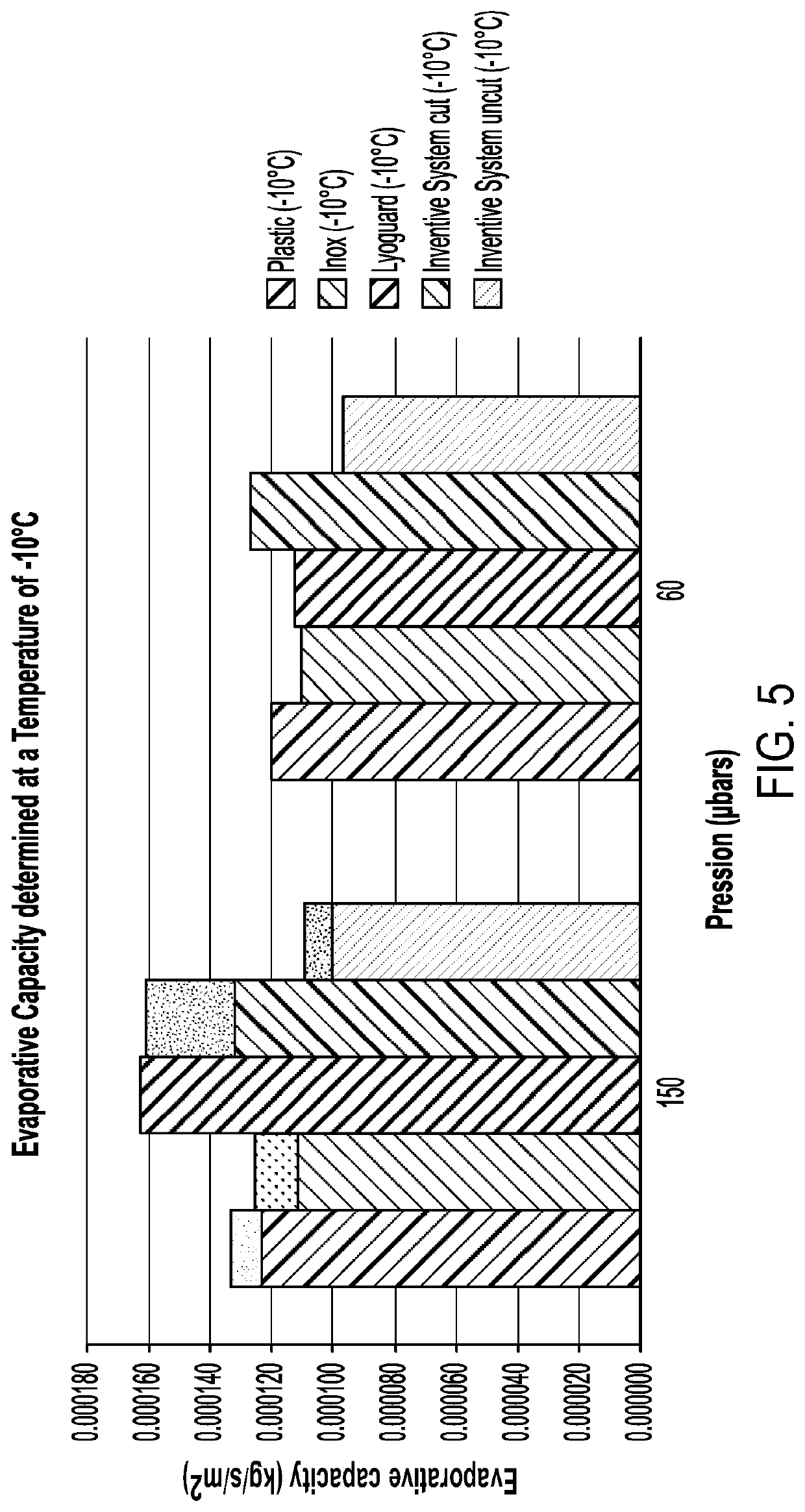Process for lyophilising a product
a technology of lyophilising and product, which is applied in the direction of drying machines, light and heating equipment, bacteria material medical ingredients, etc., can solve the problems of time-consuming cleaning/sterilisation steps, trays must be removed from the freeze dryer, and must be thoroughly cleaned, so as to minimise the risk of product contamination within the bag, the effect of reducing the exposure of the interior of the bag to potential contamination
- Summary
- Abstract
- Description
- Claims
- Application Information
AI Technical Summary
Benefits of technology
Problems solved by technology
Method used
Image
Examples
example 2
ce of Processes According to the Present Invention Versus Processes Using Conventional Lyophilisation Apparatus
[0103]Tests were conducted to evaluate the freeze drying performance of the process of the present invention as compared to processes using conventionally used apparatus. The bag of Example 1 was tested (both with its filling port opened (shown as “uncut”) and with part of its exterior cut away (shown as “cut”)) alongside a PETG plastic tray, a stainless steel tray (inox) and a Lyoguard tray. The containers were filled with water, frozen and freeze-dried for a defined period at two primary drying temperatures (−10° C. and 0° C.) and two chamber pressures (150 μbars and 60 μbars). The water quantity was measured, which enabled evaporative capacity and the global heat transfer coefficient, Kv, to be determined for each system. The results are shown in FIGS. 5 to 8.
[0104]As can be seen, the performance of the system of the invention was comparable to that of the Lyoguard tray....
example 3
of Bacterial Strains Lyophilised Using the Process of the Present Invention
[0105]Three compositions comprising separate bacterial strains (Roseburia hominis (Strain A), Bifidobacterium breve (Strain B) and Enterococcus gallinarum (Strain C)) as well as sucrose / cysteine lyoprotectants were filled into separate bags as described in Example 1 and then the bags were sealed by closing the filling ports. The contents of the bags were then frozen and the bags loaded into a freeze dryer. As this happened, the end of the bag furthest from the filling port was removed, exposing the interior of the bag, and the cut bag was then subjected to lyophilisation cycles, according to the conditions shown below:
Strain AValuesTemperature primary desiccation(PD)−25° C. to −10° C.Vacuum PD150μbarsTemperature secondary desiccation+25°C.(SD)Vacuum SD50μbars
Strain BValuesTemperature primary desiccation(PD)−30° C. to −10° C.Vacuum PD50μbarsTemperature secondary desiccation+25°C.(SD)Vacuum SD50μbars
Strain CVal...
PUM
 Login to View More
Login to View More Abstract
Description
Claims
Application Information
 Login to View More
Login to View More - R&D
- Intellectual Property
- Life Sciences
- Materials
- Tech Scout
- Unparalleled Data Quality
- Higher Quality Content
- 60% Fewer Hallucinations
Browse by: Latest US Patents, China's latest patents, Technical Efficacy Thesaurus, Application Domain, Technology Topic, Popular Technical Reports.
© 2025 PatSnap. All rights reserved.Legal|Privacy policy|Modern Slavery Act Transparency Statement|Sitemap|About US| Contact US: help@patsnap.com



